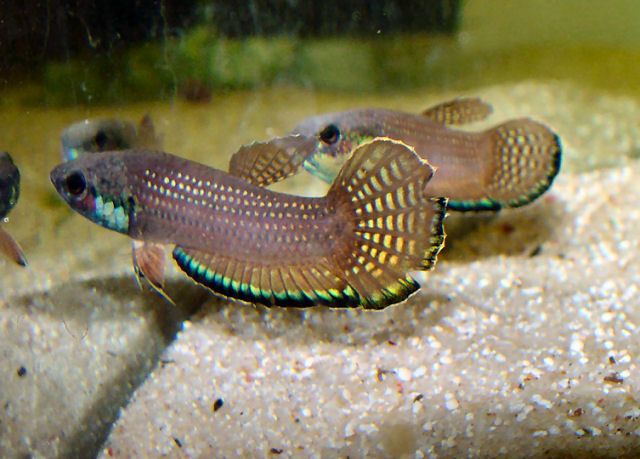Betta simplex Care: The Ultimate Guide to Keeping the Rare Krabi Mouthbrooder Happy and Healthy
Betta simplex, also known as the Krabi Mouthbrooder, is a hidden gem among freshwater fish enthusiasts. Native to the limestone streams of Krabi Province, Thailand, this species is as rare as it is beautiful. Its soft iridescence, peaceful nature, and fascinating breeding behavior make it a dream for aquarists—but caring for one isn’t as simple as it looks.

What Makes Betta simplex So Special?
Unlike the aggressive and flashy Betta splendens, Betta simplex sports a more natural, earthy palette—but don’t let that fool you. Under the right lighting, its body shimmers with blue-green hues that rival even the most colorful aquarium fish. The male’s unique role as a mouthbrooder sets this species apart: after fertilization, he carries the eggs in his mouth until the fry are ready to swim freely.
Natural Habitat: A Delicate Ecosystem
In the wild, these bettas inhabit limestone karst environments with still or slow-moving waters, leaf litter, and overhanging vegetation. Their home waters are:
- Clear to slightly tannin-stained
- Soft to moderately hard
- Slightly acidic to neutral (pH 6.5–7.5)
This delicate environment is disappearing due to limestone quarrying and land development, pushing the species to the brink. In fact, Betta simplex is now classified as critically endangered.
Tank Setup for Success
Creating a home for Betta simplex means mimicking its natural habitat as closely as possible. Here’s how:
- Tank Size: At least 10 gallons for a pair; larger if keeping a group
- Substrate: Sand or fine gravel
- Decor: Caves, driftwood, Indian almond leaves, smooth rocks
- Plants: Java fern, floating plants, Anubias
- Filtration: Sponge or gentle HOB filter
- Lighting: Low to moderate
- Lid: Tight-fitting—these fish can jump!
A well-planted, dimly lit tank with plenty of hiding spaces will help your fish feel secure.
Water Conditions Matter
Water quality is key to keeping Betta simplex healthy:
- Temperature: 75–82°F (24–28°C)
- pH: 6.5–7.5
- Hardness: Soft to moderately hard
- Ammonia/Nitrite: 0 ppm
- Nitrate: <20 ppm
Perform weekly water changes (20–30%) and test your water regularly to avoid problems.
Feeding: What They Really Want
Betta simplex are carnivores with a taste for live and frozen foods. Favorites include:
- Daphnia
- Bloodworms
- Brine shrimp
- Mosquito larvae
They’ll accept high-quality pellets or granules on occasion, but fresh or frozen options keep them at their healthiest. Feed once or twice daily in small amounts.
Breeding: The Mouthbrooding Miracle
Mating begins with a gentle embrace, after which the male collects the fertilized eggs into his mouth. He’ll carry them for 10–20 days, not eating during this time. When the fry are ready, he releases them to swim freely.
Tips for breeding success:
- Provide peace and privacy
- Don’t disturb the male while brooding
- Offer infusoria or baby brine shrimp once fry are released
This paternal care is a marvel to witness and one of the most rewarding parts of keeping this species.
Common Health Issues
Though hardy, Betta simplex can suffer if conditions aren’t ideal. Watch for:
- Clamped fins
- Lethargy
- Loss of color
- Fin rot or parasites
Prevent issues with stable water parameters, proper diet, and stress-free surroundings. Quarantine new additions to avoid introducing disease.
The Ethical Aquarist’s Role
With Betta simplex on the critically endangered list, ethical ownership matters:
- Buy from captive-bred sources only
- Never release aquarium fish into the wild
- Support conservation efforts and responsible breeders
Owning this fish is both a privilege and a responsibility. By caring for them well, you’re helping preserve a species that’s rapidly disappearing from its natural habitat.
Supplies Checklist
Before bringing home a Betta simplex, make sure you have:
- 10–20 gallon tank with secure lid
- Sponge or low-flow filter
- Heater and thermometer
- Test kits for pH, ammonia, nitrites, nitrates
- Driftwood, rocks, caves, live plants
- High-protein frozen/live foods
- Indian almond leaves or blackwater extract
Final Thoughts
Betta simplex is not your average aquarium fish. Its rare beauty, peaceful demeanor, and extraordinary parenting make it a must-have for experienced aquarists who are ready to take on the challenge.
If you’re serious about keeping one of the hobby’s most captivating wild bettas, make sure you’re doing it right.
📚 Want to Dive Deeper into Betta Fish Care?
Download our eBook, “Betta Fish Care Guide” packed with tips on tank setup, feeding, illness, and more.
👉 Get it now at WildBettaBlog.com
Start your journey into the wild world of bettas the right way—with knowledge, compassion, and the right gear.